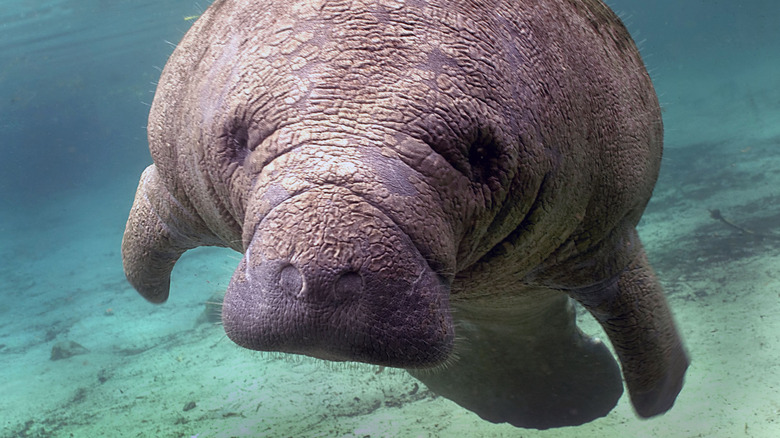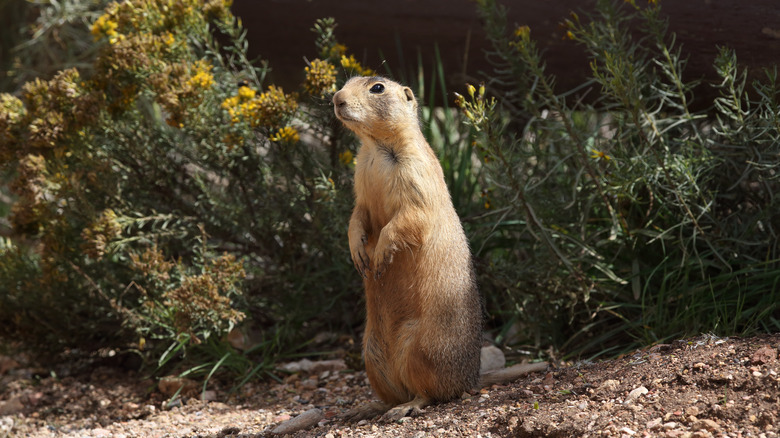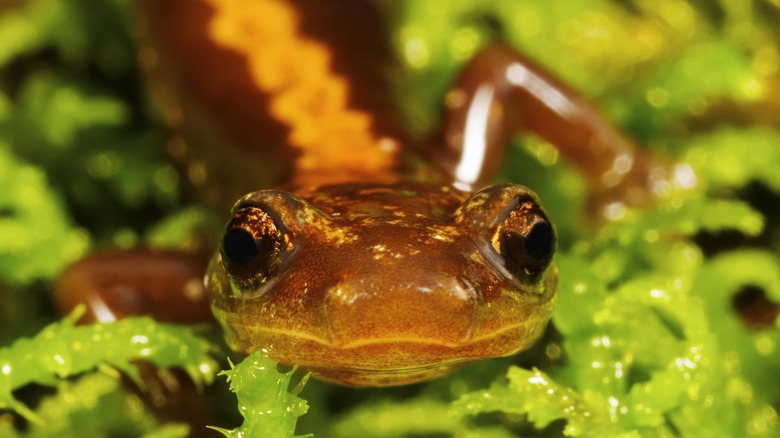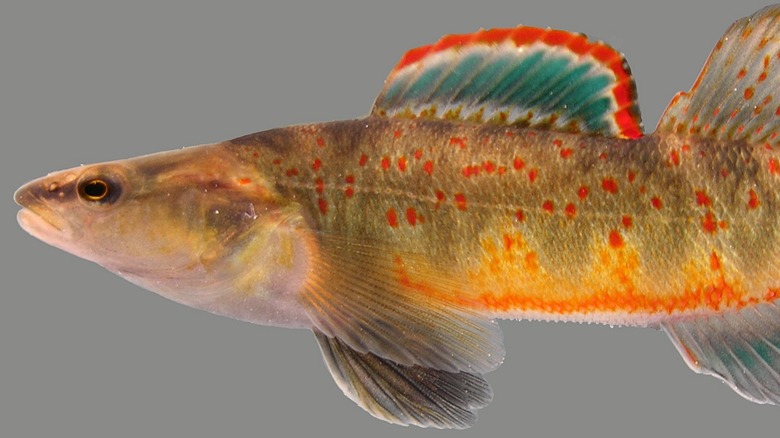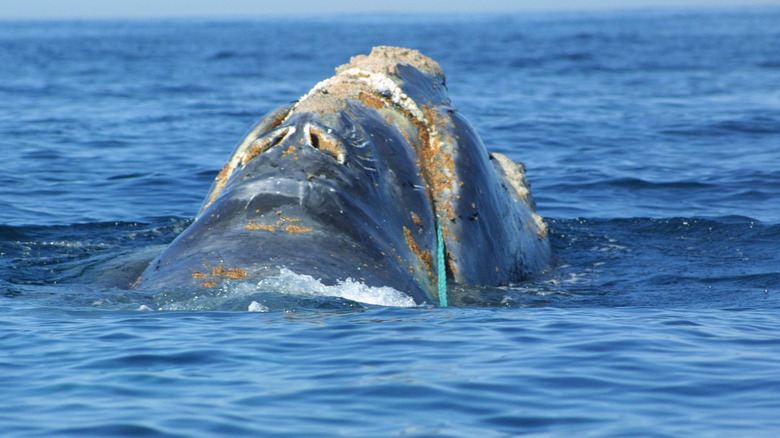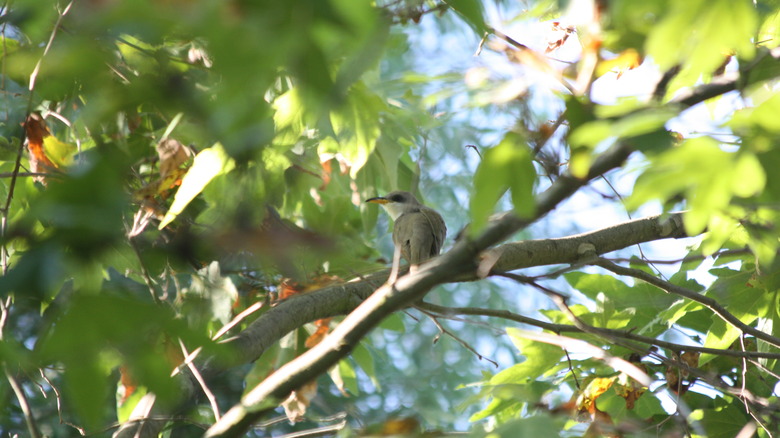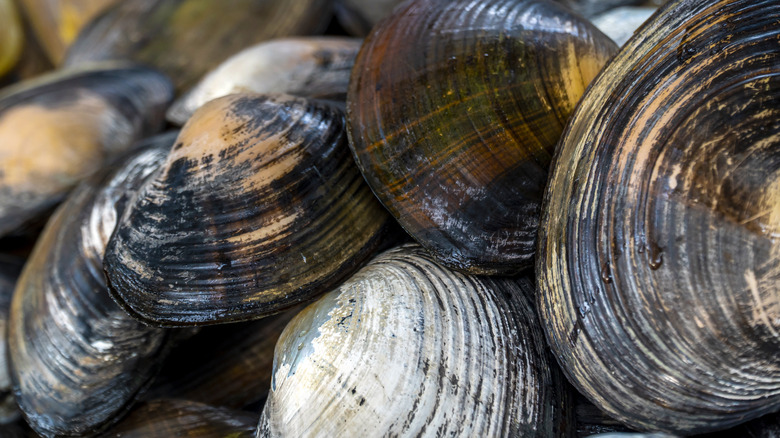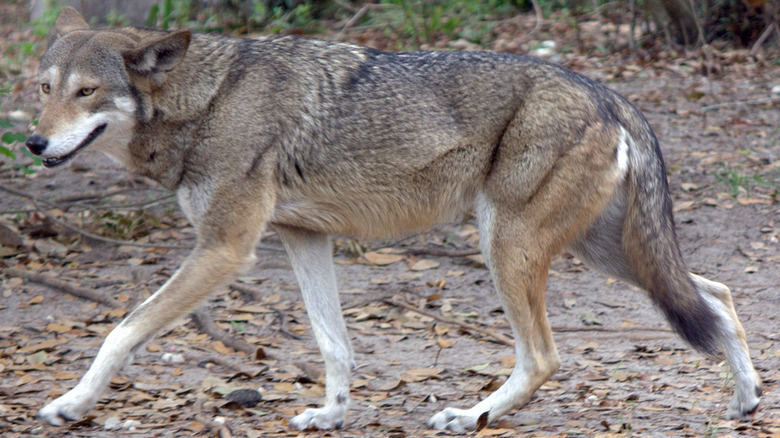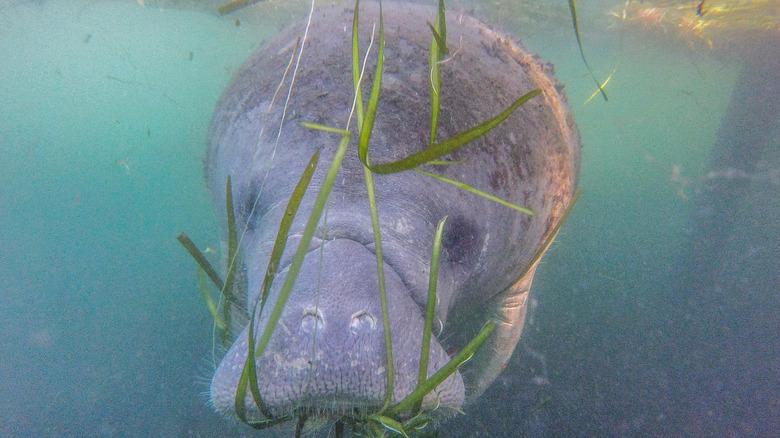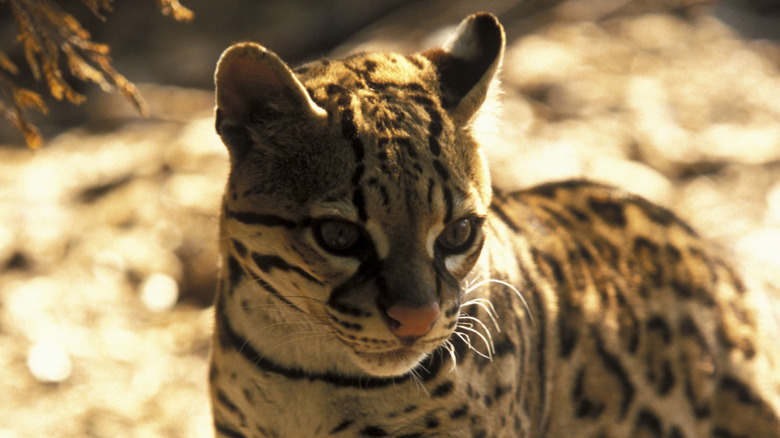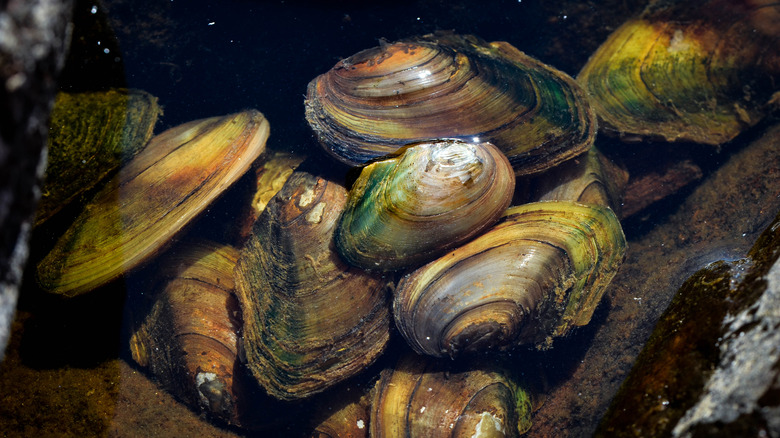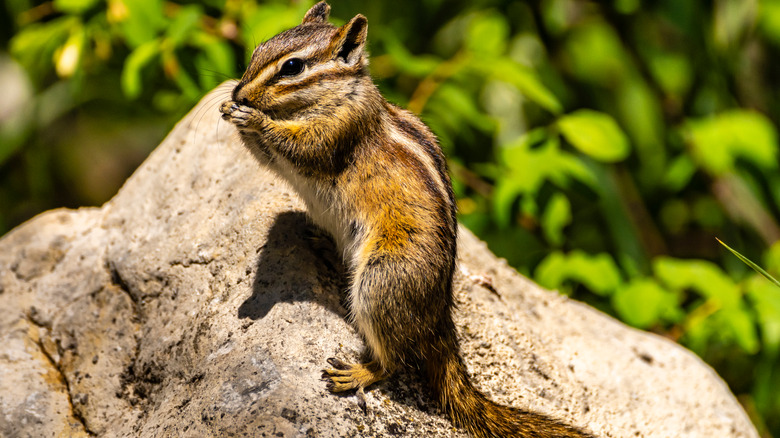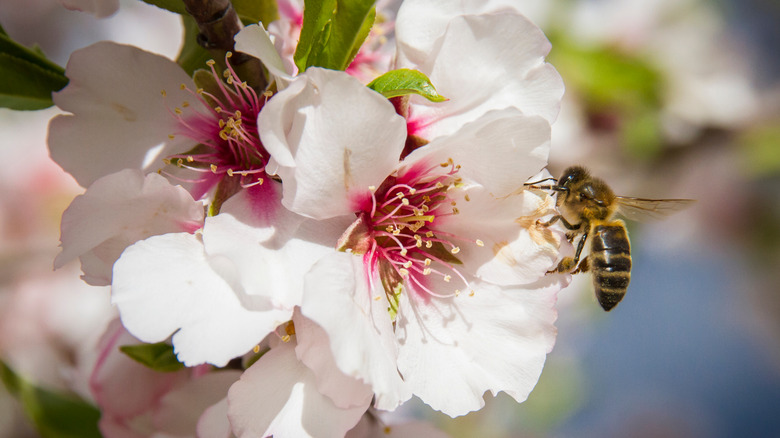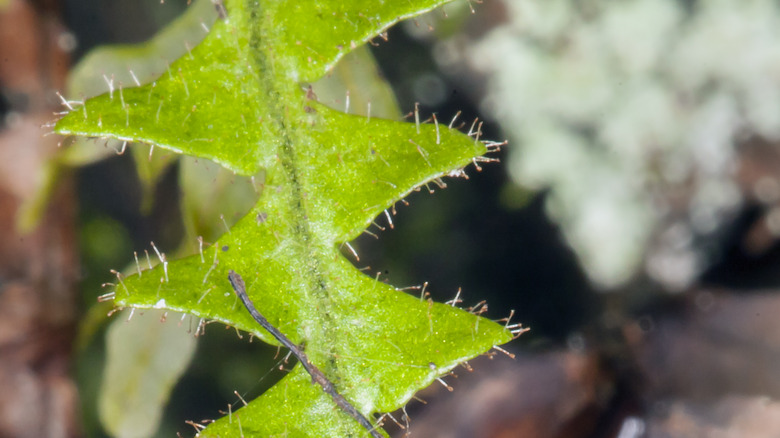States With The Most Endangered Species
In 1973, the United States Congress passed the Endangered Species Act in order to combat rising extinction rates in living beings. The Endangered Species Act creates the classification of endangered or threatened based on a species' likelihood for going extinct, and also allows individuals and organizations to petition for the addition of a species to the list.
The Endangered Species Act is considered to be one of the strongest protections for endangered species and threatened wildlife. WWF reports that in 2016, more of the species listed in the Endangered Species Act were found to be "partially or completely recovered" than in any previous year.
However, the Endangered Species Act can only go so far, and in 2021, 23 different species from 19 states were petitioned to be removed from the list because they are considered to have gone extinct. In many states, the list of endangered species is in constant flux, but unfortunately, more living beings seem to be going extinct than recovering. These are the states with the most endangered species.
Uncertain fates in Utah
Although only 43 plant and animal species in Utah are designated as endangered or threatened in the ECOS, up to 166 other plants and animals are considered "sensitive species" by the United States Bureau of Land Management. The Utah Native Plant Society also notes that Utah has up to 600 rare vascular native plant species, "represent[ing] almost 19% of our currently known flora," out of which 25 are considered to be endangered or threatened.
While some creatures like the Utah prairie dog have been considered to be endangered since 1973 and have shown little signs of population recovery, other living beings like the June sucker are being taken off the endangered species list.
But unfortunately, more species are being added to the list than being taken off. In September 2021, the Center for Biological Diversity petitioned to have the least chub covered by Endangered Species Act protections. And while the U.S. Fish and Wildlife Service has suggested downlisting the razorback sucker fish, environmental groups argue that the move is "irresponsible" and that species should be protected until "the ecosystem that they live in can support self-sustaining populations," per KUER.
Victims in Virginia
In the state of Virginia, ECOS federally classifies up to 71 species as threatened or endangered. Our Community Now lists the Shenandoah Salamander and the Virginia Fringed Mountain Snail as the two most endangered species in the state. The Virginia Fringed Mountain snail was even believed to be extinct until live snails were discovered in 1971.
According to the Virginia Department of Wildlife Resources, up to 55 different animal species are considered federally endangered, and 82 different animal species are considered endangered at the state level. Much of Virginia's biodiversity is being threatened due to habitat fragmentation, hunting habits, changes in climate conditions, and invasive species, writes Virginia Wildlife Protection.
But according to The Washington Post, many of these estimates may be understating how many endangered species there actually are in the state. Some estimates consider up to 500 vertebrate animal species in Virginia to be "at risk of extinction." Many of these animals are being threatened by fossil-fuel interests, ranchers, and mining corporations. And since Virginia is 62% forested, the number of endangered plant species is likely to be just as high, if not higher.
Keeping alive in Kentucky
Some animal species in Kentucky, like the Kentucky arrow darter (pictured), can't be found anywhere else in the world. Unfortunately, many of them, including the arrow darter, are considered some of the most threatened. As early as 2012, the Kentucky arrow darter was named one of the "10 U.S. species most threatened by fossil fuel development," according to the Center for Biological Diversity. And the Kentucky arrow darter isn't alone. up to 45 different animal and plant species in Kentucky are considered federally threatened or endangered, according to the ECOS, but the number may be as high as 78 different plant and animal species.
However, there are efforts to protect endangered species. WLWT5 reports that one of the first bat-friendly bridges was created in Kentucky in 2021 to help preserve habitats for gray bats. Gray bats have been found to roost in the cracks of bridges, but this time a bridge was built to include man-made natural gaps for the bats, rather than holes made from deterioration.
Other species, like the Cumberland Sandwort, have recovered enough that they were removed from the Endangered Species List in 2021. Kentucky Today reports that the Cumberland Sandwort "was headed toward extinction before it was listed under the Endangered Species Act in 1988."
Growing concern for Georgia
As more and more species are declared extinct in the United States, two of those include the southern acornshell mussel and the upland combshell mussel, both of which were once found in Georgia. And out of the 1,555 different plant and animal species tracked by the Georgia Department of Natural Resources, 72 are considered threatened or endangered by the U.S. Fish and Wildlife Service.
However, according to the Georgia Department of Natural Resources, 72 is likely an exceptionally low estimate and hundreds of animals and plant species are considered to be threatened or endangered, although many of them, like the Southern Elktoe and the Sun-loving Draba, don't have U.S. federal protection.
Patch reports that the Etowah Darter (etheostoma etowahae) and the North Atlantic Right Whale (eubalaena glacialis) are considered to be some of the most endangered animals in the state of Georgia. The gulf sturgeon is also threatened due to Lake Lanier's strained water supply, which has been exacerbated by the water war between Georgia, Alabama, and Florida, according to the Center for Biological Diversity.
Accumulating damage in Arizona
While relatively few living creatures in Arizona have become extinct, many species have seen their populations decrease severely. According to Arizona Game and Fish, many of the endangered and threatened species in Arizona are affected by "habitat degradation, disease, introduced species and climate change."
The ECOS lists 73 different species as being federally recognized as endangered or threatened, but some species, like the Arizona eryngo, are being newly proposed by the U.S. Fish and Wildlife Service for the list. According to Tucson.com, it's estimated that up to 95% of the habitat where the eryngo once grew was destroyed by human development like groundwater pumping.
AZCentral reports that since there's no rules under Arizona law limiting the number of wells drilled or how much water may be pumped from them, this has led to a severe decline in groundwater levels. And with all the groundwater pumping, the San Pedro River is in danger of drying up. Short of protections for the river itself, activists have fought for federal protections for living things such as the western yellow-billed cuckoo and the Huachuca water umbel.
Making moves in Mississippi
Federally, only around 50 different plant and animal species are recognized as being endangered or threatened in Mississippi, but the number may be as high as 85 different species. Endangered Species of Mississippi writes that the number of extinct species in Mississippi is also steadily growing, including living things such as the Carolina parakeet, and creatures such as the red wolf can no longer be found in Mississippi.
And Nola.com writes that animals like the Pearl darter can barely be found in its namesake river, the Pearl River. As of July 2021, the U.S. Fish and Wildlife Service is considering protections for 517 miles of the Pearl River in Mississippi, "where the endangered Pearl darter still has places of refuge."
Freshwater mussels are also among some of the animals proposed for protection, like the pyramid pigtoe mussel, which has lost "nearly 80% of its range to the nation's lack of regard for rivers," writes The Chattanoogan.
Turning tides in Tennessee
In Tennessee, at least 108 different species are federally recognized as being endangered. Many of these species are found in the Tennessee River Basin, and dozens are also considered endangered or threatened at the state level, according to Tennessee Riverkeeper. However, the overall number may be much higher, with Tennessee Wildlife Federation reporting that more than 1,400 plant and animal species have been identified as "in greatest need of conservation."
Some living things, like the snail darter, were taken off the endangered species list in August 2021, according to Associated Press, after having been considered endangered by the U.S. Fish and Wildlife Service since 1975. Since the passage of the 1973 Endangered Species Act, Tennessee purple coneflowers have also been removed from protection after a reported increase in population.
Unfortunately, not all of the endangered living creatures in Tennessee have been able to make as successful of a comeback. KRTV reports that out of the 23 species proposed to be removed in 2021 from the Endangered Species Act due to their extinction, six of them were at one point found in Tennessee.
Dwindling numbers in North Carolina
In North Carolina, up to 65 different plant and animal species are federally considered to be endangered or threatened. In addition, the North Carolina Wildlife Federation lists 109 species as endangered or threatened and 129 as "species of special concern."
In June 2021, the Carolina madtom and the Neuse River waterdog were also added to the U.S. Fish and Wildlife Service's endangered species list. This means that roughly 1,000 miles of streams and rivers will be considered critical habitat and protected as such, per Spectrum News 1. Other creatures, like the red wolf, remain critically endangered and are listed on the International Union for Conservation of Nature's Red List. The Wolf Conservation Center writes that as of July 2021, there were only nine red wolves known to be in the wild in North Carolina.
According to North Carolina State University, many of the endangered and threatened species are directly threatened by humans as a result of "pollution, urbanization, poorly planned timber harvest, wetland drainage, and conversion of natural areas to agricultural land."
Falling numbers in Florida
In Florida, over one-third of all the species in the state are considered "imperiled." According to the Florida Fish and Wildlife Conservation Commission, out of 383 animal species, 130 are considered imperiled species. Comparatively, in the U.S. Fish and Wildlife Service's Environmental Conservation Online System (ECOS), 130 different species of plant and animal species are considered either threatened or endangered. As such, it's estimated that at least 135 different plant and animal species in Florida alone can be considered endangered.
But this number is likely an underestimate. According to the National Park Service, approximately 180 plant and animal species that occur in Everglades National Park in Florida are considered "threatened, endangered, species of special concern, or commercially exploited." ARK Republic writes that between 2014 and 2019, there's been an acceleration in the decline of animals, especially in the Everglades, where the "quality of the water and quantity" are the biggest issues.
The future of many of these species remains in flux. On September 30, 2021, 23 extinct species were cited by the U.S. Fish and Wildlife Service to be removed from the Federal Lists of Endangered and Threatened Wildlife and Plants, including Bachman's warblers and the ivory-billed woodpecker, which were once found in Florida. In August 2021, two Florida House representatives also introduced legislation to redesignate manatees as endangered, after having been downgraded as no longer endangered in 2017.
Keeping track in Texas
In 2020, the Texas Parks and Wildlife Commission added 45 new species to the list of threatened and endangered animals in the state of Texas, bringing the total number to 147. However, according to The Texan, only about 12 of the animal species also appear on the federal list of endangered species. Meanwhile, the ECOS lists up to 99 different plant and animal species as being threatened or endangered.
While some animals like the ocelot and the aplomado falcon are well-recognized faces of the endangered species crisis, other living things like bunched cory cactus and the leon springs pupfish, suffer from similar drops in population but with less media coverage, according to Texas Monthly.
The Sierra Club also reports that the U.S.-Mexico border wall also puts up to 100 endangered species "at increased risk." But luckily, when the Keystone XL pipeline was defeated, Friends of the Earth writes that its demise meant that the habitats of up to 20 different rare and endangered species like whooping cranes and pallid sturgeons in Texas were protected from the detriments of tar sands oil production. In August 2021, the U.S. Fish and Wildlife Service proposed classifying six Central Texas mussel species as endangered or threatened as well.
Accessing the damage in Alabama
As 23 different animal and plant species were declared extinct in 2021, joining up to 650 other species from the United States, seven of those species were freshwater mussels native to the state of Alabama. And according to Tierra Curry, a senior scientist at the Center for Biological Diversity, "We're at risk of losing hundreds more species because of a lack of urgency."
The ECOS lists 140 different species as being federally classified as endangered or threatened. And while Alabama ranks fifth among all the states in regards to biodiversity, it also has one of the highest numbers of endangered and threatened species, per AL. The biggest threat to living creatures in Alabama include climate change, runoffs, and dams. And since most of the threatened and endangered species in Alabama are water-based, polluted water can end up having an incredibly detrimental effect. In September 2021, the slenderclaw crayfish of Alabama was also given protection under the endangered species act after the Center for Biological Diversity began petitioning for its protection in 2010.
According to the The Alabama Natural Heritage Program, unlike some other states, Alabama doesn't have a state law equivalent to the Endangered Species Act, "so species do not have regulatory protection as state endangered or threatened species."
New Mexico's natural diversity
With over 4,500 known species, New Mexico has the 4th highest natural biodiversity out of any other state in the United States. Out of these native species, it's estimated that over 235 plant species are rare and endangered. In addition, up to 59 different plant and animal species are also federally considered to be threatened or endangered, according to the ECOS. In September 2021, the Peñasco least chipmunk was also petitioned to be given protections under the Endangered Species Act.
In August 2021, the U.S. Forest Service, the U.S. Fish and Wildlife Service, and the Center for Biological Diversity came to an agreement to protect streams and rivers in western New Mexico from cattle grazing. According to the Center for Biological Diversity, the three-year agreement requires the Forest Service to make sure that over 150 miles of habitat in the Gila National Forest in New Mexico will remain free from cattle grazing.
Although the Forest Service and Fish and Wildlife Service were meant to have prohibited domestic livestock grazing ever since 1998, this new agreement comes out of a settlement after the Center for Biological Diversity sued the Forest Service and Fish and Wildlife Service for violating the Endangered Species Act.
Crumbling populations in California
California may have the second-greatest number of endangered species out of all the states in the United States. While the ECOS federally recognizes up to 281 different plant and animal species as being threatened or endangered, the California Natural Diversity Database recognizes at least 173 animals alone as being federally or state listed as endangered or threatened. Meanwhile, KRCR reports that over 300 different animal and plant species are considered threatened, rare, or endangered.
But despite the protections offered by the Endangered Species Act, as The San Diego Union-Tribune notes, it doesn't cover insects and California is described as currently experiencing an "insect apocalypse." It's estimated that up to 40% of insects, "including 10% of terrestrial insects per decade," have already been lost. Unfortunately, in November 2020, the California Superior Court in Sacramento ruled that insects aren't covered by the California Endangered Species Act.
Other animals, like the California condor, are slowly starting to see an increase in their numbers after a breeding program was launched in 1987, according to Smithsonian Magazine.
Havoc in Hawai'i
Out of the over 1,600 species listed as endangered or threatened in the Endangered Species Act, Hawai'i is home to over 500 of them, making it the state with the most endangered animals, despite making up less than 0.2% of the total landmass of the United States. ECOS lists 502 different animal and plant species as threatened or endangered, but according to Society for Conservation Biology North America (SCBNA), there are at least 600 additional species in Hawai'i that aren't listed but are considered "endangered or imperiled."
The number of extinct animals is also steadily increasing. On October 3, 2021, Hawai'i lost eight different types of forest birds and one species of flowering plant to extinction, Hawaii Magazine writes. Reports have called Hawai'i both the "endangered species capital of the world" as well as the "extinction capital of the world" due to all the "overbuilding and pollution." Indigenous Hawaiian activists have also been protesting the Thirty Meter Telescope, arguing that it's impossible for such a telescope to be built without "frustat[ing] the endangered species and the land and the water of Mauna Kea," per Daily Nexus. Although the project was halted in 2020, it may only have been delayed until 2023.
However, Honolulu Civil Beat reports that some living things, like the pendant kihi fern, or adenophorus periens, were rediscovered in September 2021, after having been thought to be extinct since 2019.
